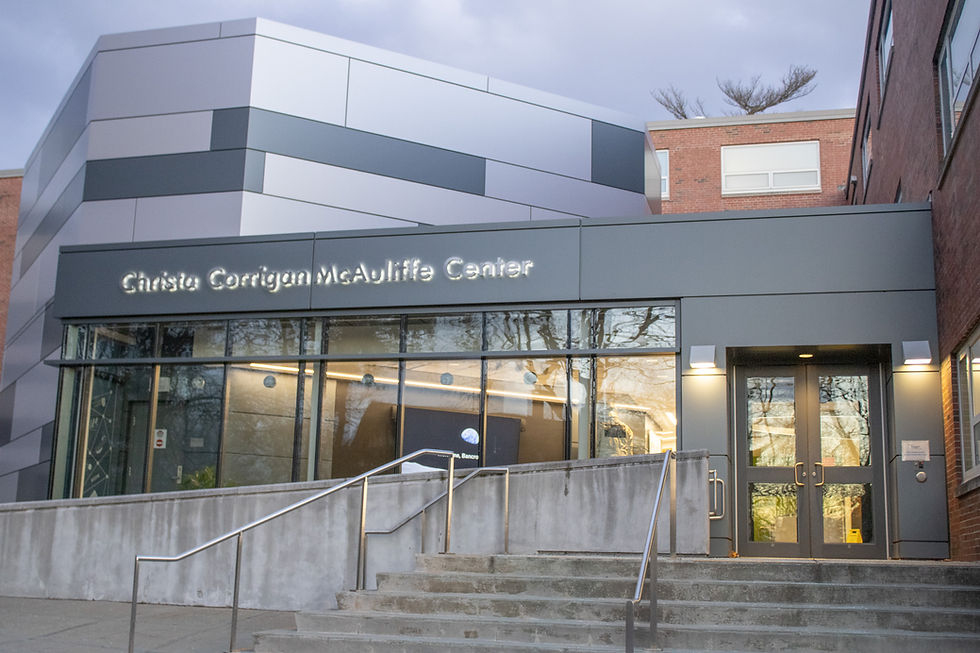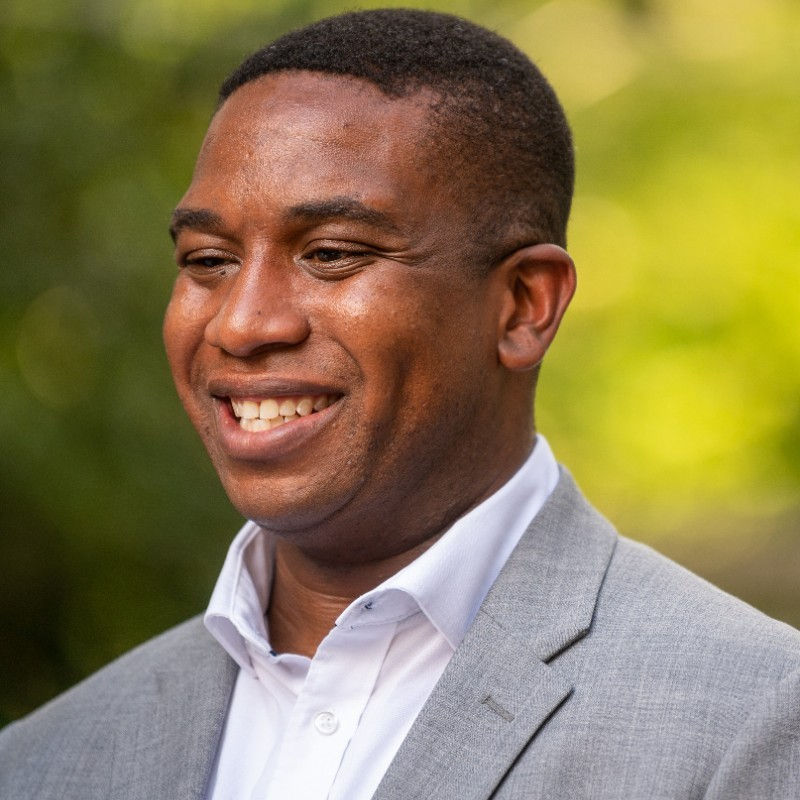Building temperatures and part-time faculty salaries discussed at All University Meeting
- Jennifer Johnson
- Sep 17, 2015
- 6 min read
By Jennifer Johnson
At the All University Meeting on Wednesday, Sept. 16, faculty raised concerns about the lack of air conditioning in May Hall and a contract for Division of Graduate and Continuing Education (DGCE) employees.
The All University Meeting, which takes place at the beginning of every semester, is a forum for administrators to outline their goals for the semester and to hear from the community.
Executive Vice President Dale Hamel was asked to address the temperature issues in May Hall.
According to Hamel, the proposal to install air conditioning in May Hall has been on the five-year plan for a number of years. “Every year, some other priorities begin to be identified and take precedent, most recently the renovation of Crocker Hall. The project is scheduled for October 2017 and hopefully, it will stay on schedule at that point.”
History Professor Richard Allen then asked, “Why are more effective short-term measures not being taken regarding the heat in May Hall? We can spend tens of thousands of dollars on new administrative personnel, but we can’t spend a couple thousand on fans in classrooms?
“We are talking about conditions that are intolerable. What is it going to take? Is it a stream of
ambulances pulling up in front of May Hall for us to deal with this problem?”
Hamel replied, “This is a $600,000 project. This was obviously a very hot unusual fall semester and we recognized the issue in many ways. We should not continue to press this problem out and we should address the long-term issue.”
President F. Javier Cevallos also addressed the lack of air conditioning in May Hall. He said the administration “came together to try and figure out a plan to alleviate the situation as much as possible.”
He added, “Marc Cote was here on the day of his birthday assembling fans, and I know that Sodexo provided cold water and ice during the hot days in the hallways. I know the ideal solution is air conditioning.”
Allen also asked Cevallos to comment on “the current Lasco that is the website.” He expressed his concerns, stating, “I’d have more fun beating my head against a brick wall” than navigating the school’s new website.
Cevallos replied that he is hopeful the site will be working properly in the near future. “It is an incredibly complex series of links.”
Robert Donohue, president of the faculty union, expressed concerns regarding the lack of a contract for part-time faculty.
According to Donohue, the DGCE contract expired Dec. 31, 2014. He added faculty has been without a pay increase for 20 months.
“The DGCE faculty are without a contract because the University presidents are offering the DGCE faculty a pay raise that is less than half of what every other union public employee in Massachusetts received last year,” said Donohue.
Donohue added that while the university president said there isn’t any money for larger raises for DGCE faculty, at FSU, the number of non-union employees has increased by 57 percent in the last five years. Additionally, the salaries for non-union employees at FSU have increased by 75 percent, or $1.5 million, over the last five years.
Donohue claimed FSU has $45.4 million in reserves and asked, “How can the university presidents argue there is no money for the lowest paid in the context of the money being spent on the highest paid in FSU reserve funds?”
Cevallos replied, “I do not argue with the figures. But the reality is we have two contracts. We have a contract that is the day faculty contract and a contract that is the DCGE contract. Ideally, we would solve the issue by having one contract for everybody.”
He added he is not able to directly comment on the issue because it is being negotiated legally. However, “I can comment on the idea that we should have one contract to cover everybody. ... I think we can both agree that next time we sit at a table, we should rewrite the contract so as to benefit everyone.”
Cevallos introduced new administrators, including Interim Vice President of Enrollment and Student Development Lorretta Holloway, Dean of Education Arlie Woodrum and Director of Marketing Averil Capers.
Cevallos updated students, faculty and staff on the search for a new Vice President of Enrollment and Student Development. According to Cevallos, the committee will be co-chaired by Professor Michael Wong-Russell and Chief of Staff and General Counsel Rita Colucci and will also include student representatives.
The plan is to start interviews in November in order to have final candidates by January. “This way, an offer can be made by March and someone will be in place by July 1st of next year,” he said.
Cevallos emphasized the importance of the three Rs: Recruitment, Retention, and Responsiveness.
On recruitment, Cevallos said, “We are facing major competition with small private universities. ... We really need to sharpen ourselves to make sure we are offering them the best highest academic quality, which we have, and the best value, which we also have.”
He added that the focus is not only on bringing students to campus, but also assuring the happiness and success of students both academically and socially. “An increase in retention is an increase in graduation rates,” he said.
Cevallos hopes to increase responsiveness all over campus in order to make FSU a better place for everyone.
Hamel informed faculty that the science building project was in fact completed for the Fall of 2015 and the grand opening will be Oct. 29th.
He added there are multiple side projects that still await completion. “We are beginning to conclude the design for what we are calling a phase-three backfill renovation.”
According to Hamel, there are areas in Hemenway Hall and Hemenway Annex that are in need of repositioning and the majority of work will begin during the spring semester. The Nursing Suite will require the most work, which will not conclude until Dec., 2016.
Hamel said the residence hall being built on Maynard Road is scheduled to be completed by the Fall of 2016. “This will coincide with some repositioning of O’Connor Hall as an academic classroom as well as Crocker Hall.”
Regarding the 2016 budget, Hamel reported that state-appropriation funding for FSU increased by just over $900,000, which is a 3.5 percent increase.
He added that tuition and fees have increased by $380 while comprehensive college fees, including room and board, has increased by $780, which is only a four percent increase, and the second lowest increase of Framingham State’s sister colleges.
Huddleston announced that Framingham State has been recognized by the magazine, “Insight Into Diversity,” as a recipient of the Higher Education Excellence in Diversity Award for the second year in a row.
Last year, FSU was the only university in the state that had ever received this award.
Huddleston announced that a five-year strategic plan has been developed for inclusive excellence and explained that it is a “great way for us to have a blueprint in how to move forward as a university.”
Emerging Technologies and Digital Services Librarian Millie Gonzalez and Director of Library Services Bonnie Mitchell were recognized by Huddleston for their efforts in winning FSU a competitive grant.
The Latino Americans: 500 years of History Grant was given to FSU by The National Endowment for the Humanities and the American Library Association.
Huddleston said there are two grand openings for new spaces on campus – one of which is the Center of Inclusive Excellence, formerly known as the Multi-Cultural Center. He recognized Kathy Martinez as being responsible for the success of this center.
Huddleston also recognized Colleen Hoffman for all of the work she has put into the MetroWest College Planning Center. “It is a place that we want people to be able to recognize that education is absolutely possible for everyone.”
Interim Vice President of Enrollment and Student Development Lorretta Holloway explained that her goal this year is to “break down some of the barriers between divisions.”
Holloway said she hopes to increase the collaboration between Enrollment and Student Development with Academic Affairs, and ultimately departments all over campus. She added that crosswalk meetings have been reestablished in order to make conversations within the community more cohesive.
She added, “The only way we can keep up recruitment and retention is to remember that it isn’t all about us. It’s about the students.”
Holloway said that the Civic Learning Engagement and Outreach Initiative (CLEO) is a new undertaking that will not create more work but rather alleviate workloads. “So many people are already doing civic engagement things, but no one knows about it. We can pool our resources by taking this initiative.”
Linda Vaden-Goad, provost and vice president of academic affairs, echoed the three Rs presented by Cevallos earlier in the meeting.
Vaden-Goad said the graduation rate has risen from 51 percent to 56 percent.
According to Vaden-Goad, there is a new Smithsonian Affiliates program and FSU is getting ready to initiate Starfish – “a social media way to make students successful.”
She added that 198 students took advantage of international study opportunities, which prepared them for global citizenship.
Vaden-Goad also hopes to create greater support at all faculty levels this year.
Cevallos asked, “How can we make this a better place for all of us? ... A pebble in your shoe can be very small, but very annoying, and how do we resolve some of those issues to make it a better?”





